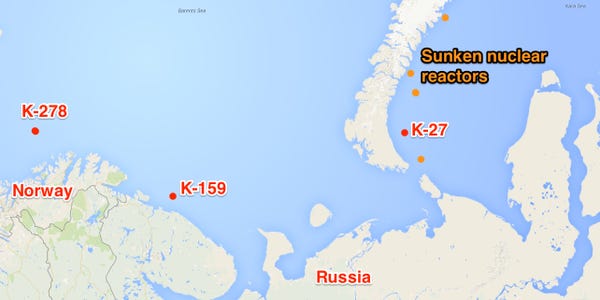No other places in the world’s oceans have more radioactive and nuclear waste than the Kara Sea. The reactors from the submarines K-11, K-19, and K-140, plus the entire submarine K-27 and spent uranium fuel from one of the old reactors of the Lenin-icebreaker have to be lifted from the seafloor and secured. While mentality in Soviet times was «out of sight, out of mind», the Kara Sea seemed logical. Ice-covered most of the year, and no commercial activities. That is changing now with rapidly retreating sea ice, drilling for oil-, and gas and increased shipping.
The submarine reactors dumped in shallow bays east of the closed-off military archipelago of Novaya Zemlya… had experienced accidents and posed a radiation threat at the navy yards where people were working. Dumping the reactors in shallow waters, someplace at only 50 meters, meant they could be lifted one day when technology allowed.
A worst-case scenario would be a failed lifting attempt, causing criticality in the uranium fuel, again triggering an explosion with following radiation contamination of Arctic waters.
A Russian-Norwegian expedition to the K-27 submarine in Stepovogo bay in 2012 took samples for studying possible radioactive leakages. Now, the Bellona group, an environmental NGOs, calls an expedition in 2021 to thoroughly study the strength of the hull and look for technical options on how to lift the heavy submarine and reactor compartments. A previous study report made for Rosatom and the European Commission roughly estimated the costs of lifting all six objects, bringing them safely to a yard for decommissioning, and securing the reactors for long-term storage.
The estimated price-tag for all six is €278 million, of which the K-159 in the Barents Sea is the most expensive with a cost of €57.5 million. Unlike the submarines and reactors that are dumped in relatively shallow waters in the Kara Sea, the K-159 is at about 200 meters depth, and thus will be more difficult to lift.
Excerpt from Tackling dumped nuclear waste gets priority in Russia’s Arctic Council leadership in 2021, BarentsObserver, May 23, 2021
